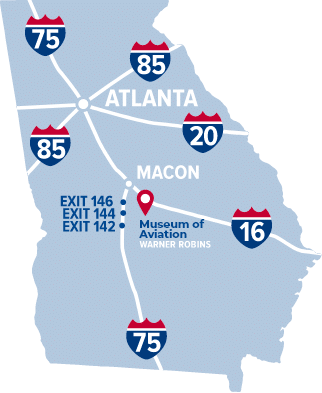The B-66 was developed from the Navy A3D Skywarrior for USAF-use as a tactical light bomber, photo, and weather reconnaissance aircraft. The B-66 first flew on 28 June 1954. B-66s became operational in 1956; production ended in 1958.
The B-66 was the last tactical bomber built for the USAF, and only the B-66B was designated exclusively as a bomber. Others served as tactical reconnaissance aircraft, while the final version, the WB-66D (of which 36 were built) was designated for electronic weather reconnaissance. Some B-66s were modified for service in Vietnam as electronic countermeasures aircraft to confuse enemy radar defenses.
Warner Robins Air Logistics Center acquired world-wide logistics responsibility for all B-66s in 1954 until all were retired in 1970. The WB-66D on display was last assigned to the 363rd Reconnaissance Wing at Shaw AFB, South Carolina in 1957 and retired from the 363rd in 1965. It was acquired by the Museum of Aviation in 1985.








